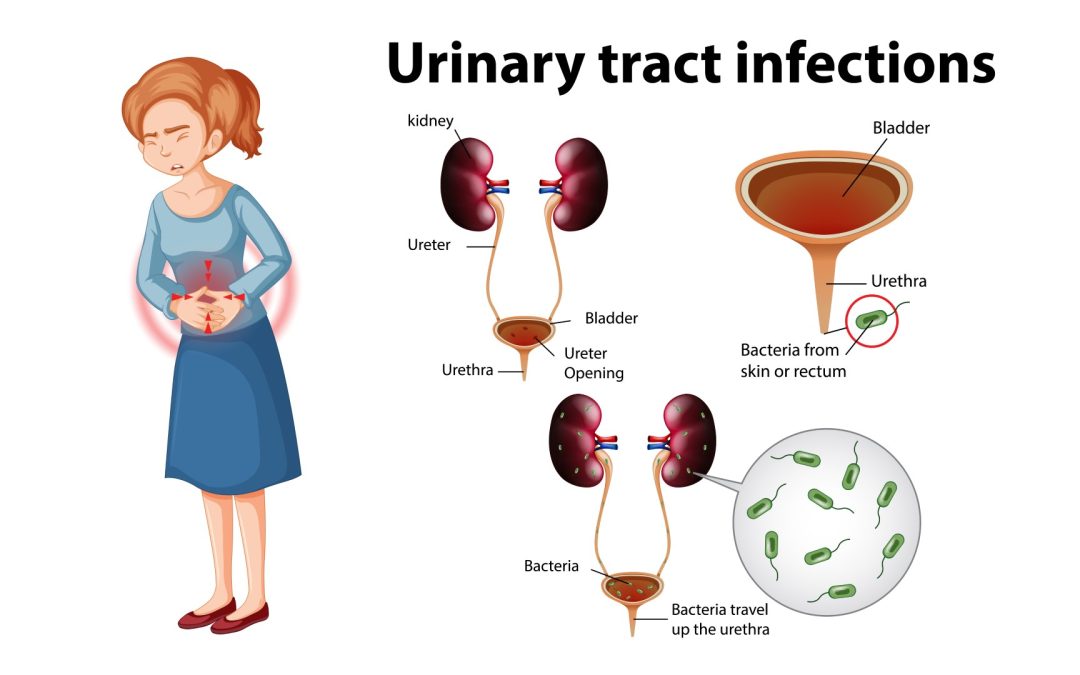If you’ve ever experienced the uncomfortable burning sensation and frequent urge to urinate, you’re certainly not alone. Among the common reasons for seeking medical attention from an Obs/Gyn, urinary tract infections (UTIs) rank high on the list. Urinary tract infections (UTIs) affects millions of people worldwide. However, statistics indicate that women are more prone to UTIs compared to men. This disparity has intrigued researchers and medical professionals for years. In this blog, we will delve into the reasons behind this gender-based vulnerability, exploring various factors that contribute to the increased occurrence of UTIs in women.
Anatomy and Physiology:
One of the primary reasons why women are more prone to UTIs lies in their anatomical and physiological differences. The primary factor contributing to the higher susceptibility of UTIs in women is their unique anatomical structure, specifically concerning the urethra. The urethra serves as the passage for urine to exit the bladder and leave the body. The female urethra is shorter compared to that of males, which increases the likelihood of bacteria reaching the bladder. The average female urethra is 1-2 inches long compared to the male urethra which is 6 inches long. These factors are further compounded by the close proximity of the female urethra to the rectum, which carries waste and bacteria, including E. coli. Notably, E. coli is the primary cause of bladder infections, accounting for approximately 51% of cases.
Furthermore, unlike their male counterparts, the external urethral meatus in women is predominantly lined with moist mucosal tissue, which is thinner and more sensitive compared to the skin found elsewhere on the body. This delicate nature of the female urethral tissue makes it more susceptible to trauma and irritation. The irritated skin can create an environment that allows bacteria to potentially thrive and multiply before ascending the short distance up the urethra and reaching the bladder
Hormonal Influences:
Hormonal fluctuations in women can impact the likelihood of developing UTIs. Changes during the menstrual cycle, pregnancy, and menopause can affect the acidity of the vaginal environment and alter the balance of beneficial bacteria. These hormonal shifts can weaken the immune response and create an environment conducive to bacterial growth.
Sexual Activity:
Sexual intercourse can introduce bacteria into the urethra and increase the risk of UTIs. The use of spermicide or a diaphragm for birth control can also increase the frequency of UTIs. Spermicide may lead to vaginal irritation, creating a conducive environment for bacterial growth.
Structural Abnormalities:
Some women may have structural abnormalities in their urinary tract, such as a urethral diverticulum or a urinary tract obstruction. These conditions can impede the flow of urine, leading to stagnant urine in the bladder and increasing the chances of bacterial growth and infection.
Tips for prevention
The above discussion highlights the inherent vulnerability of women to bladder infections compared to men, despite practicing perfect hygiene. However, there are several hygiene tips that women can follow to help prevent UTIs.
Ensuring an adequate intake of fluids, particularly water
Staying adequately hydrated, particularly by drinking plenty of fluids, is crucial for maintaining hydrated and healthy bladder tissue. Hydration helps dilute urine, reducing the concentration of bacteria in the bladder. Remarkably, some individuals can even resolve mild infections through increased fluid intake alone.
By prioritizing hydration and ensuring sufficient fluid consumption, you can take proactive steps in preventing UTIs.
Empty your bladder often
To prevent bacteria from finding an optimal environment to thrive, it is essential to empty your bladder regularly. Regular bladder emptying minimizes the amount of time urine spends in the bladder, depriving bacteria of a warm and wet environment. By ensuring you empty your bladder frequently, typically around four to eight times per day, you disrupt the conditions that bacteria need to grow. This simple practice can significantly reduce the risk of UTIs and promote bladder health
Urinate after sex
Urinating soon after sexual intercourse is an important preventive measure. During intercourse, bacteria can come into close proximity with or enter the urethra, the small tube that empties the bladder. By urinating shortly after sex, you can expel some of the bacteria from the urethra before it has a chance to cause an infection. This simple act helps to flush out any potentially harmful bacteria, reducing the risk of developing a UTI. Making it a habit to urinate promptly after sexual activity is an effective strategy for maintaining urinary tract health.
Wiping front to back
Practicing proper wiping technique is crucial in preventing the spread of bacteria from the anal region to the vagina and urethra. After urinating or having a bowel movement, it is important to wipe from front to back. This technique ensures that any bacteria present in the anal area are not accidentally transferred to the vaginal or urethral area. By consistently following the front-to-back wiping motion, you can minimize the risk of introducing harmful bacteria and reduce the likelihood of UTIs.
Ref :
J Gend Specif Med.2000 Nov-Dec;3(8):27-34.
Menopause Int. 2013 Dec;19(4):155-62
https://www.mayoclinichealthsystem.org/

